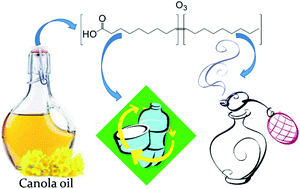The production of biobased nonanal by ozonolysis of fatty acids
Abstract
Ozonolysis has been proposed as a clean and efficient reaction for use in the production of biobased aldehydes from unsaturated plant oils that can directly replace similar petrochemical compounds. However, further oxidation of aldehydes to carboxylic acids can occur which reduces the yield and complicates aldehyde purification. In this work, the ozonolysis of free fatty acids in an aqueous medium was systematically studied with the objective of producing high yields of nonanal. A reductive/catalytic hydrogenation process was also used in order to reduce the ozonides and so increase the yield of aldehydes. The use of water as a co-solvent during the ozonolysis/hydrogenation processes was found to significantly reduce the formation of carboxylic acids compared to the use of organic solvents, described previously for the ozonolysis of oils and its derivatives. This can be attributed to the effective dilution and decomposition of peroxides formed in water, compared to the situation for organic solvents. A correlation between the ozonolysis time, ozone concentration and the aldehyde yields were observed. In particular, high ozone concentrations resulted in much faster production of aldehydes, so that under optimized conditions, nonanal production was achieved without excessive production of nonanoic acid. Various biobased aldehydes, which are used as key aroma ingredients and intermediates in flavor and fragrance formulations, can be prepared in a similar way by selection of other fatty acid feedstocks.


 Please wait while we load your content...
Please wait while we load your content...